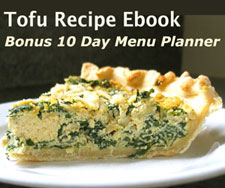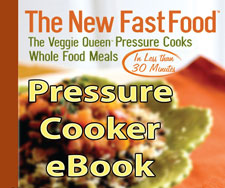
Gluten Free Baking In A Whole Foods Kitchen
Healthy Gluten Free Baking, Tips & Recipes for Gluten Free Diet

Reprinted by permission from the author, Chef Del Sroufe,The Wellness Forum. Be sure to visit his home page and see his excellent video on sautéing veggies without oil.
A gluten free diet is one completely free of the protein found in wheat, barley, rye and the hundreds of food products made with gluten.
People eat a gluten free diet for many reasons, the most common one being Celiac's Disease. Whatever the reason, living gluten free no longer means living in isolation.
Most large grocery stores offer gluten free foods, and there are many online stores and communities offering support, education and products. But if you want whole grain, dairy free, low fat, gluten free products, made without oil (like those in the Wellness Forum Pantry), your choices are more limited.
Too many of the gluten free products found on store shelves mirror the Standard American Diet - processed foods full of dairy, oils, white sugar and refined flours. Even most gluten free cookbooks are full of recipes made with these unhealthy ingredients.
What to do? If you really want to make healthy gluten free baked goods in your own kitchen, you need to know where to find the right ingredients and what to do with them once you have them.
Helpful tips and resources for gluten free baking:
1. Converting your favorite recipe to gluten free is not as easy as replacing whole wheat flour with brown rice flour. Gluten serves a specific purpose in baked goods. The protein, when mixed with water, forms strands that give bread its chewy texture and trap gases during baking to make baked goods lighter. Without the gluten, or some gluten-like agent, your finished product can be dense and lifeless.
2. To achieve the best results for your recipe, use a gluten free flour blend made with whole grain flours like amaranth, millet, quinoa, or brown rice flours, and binding agents like tapioca flour and a little xanthan gum.
3. You only need 1/2 tsp xanthan gum per cup of gluten free flour. How much tapioca flour you use is almost up to you. As little as 10%, and as much as 30%, depending on the recipe, makes all the difference in the final outcome.
4. Del's Favorite Gluten Free Flour Blend:
If you don't like the flavor or texture of this blend, play around with different blends of the gluten free flours listed below and others like garbanzo, sorghum or buckwheat flours. For a list of possible whole grain gluten free flours visit Gluten Free Mommy
- 1 cup brown rice flour
- 1 cup millet flour
- 1 cup amaranth flour
- 1 cup tapioca flour
- 1 1/2 teaspoons Xanthan gum
- Mix well and store in an airtight container refrigerated.
5. It's one thing to go gluten free, it's another to go gluten free, oil free and whole grain---that requires a paradigm shift in the way you look at your cookies. For a llttle help, visit Get Off Gluten. The author has several recipes that are whole grain and oil free (she cites The China Study as one of her influences for health).
Where to shop for gluten free baking supplies:
Once you've re-written your favorite recipes to conform to your healthy Wellness Forum-inspired, gluten free pantry, you need to go shopping. Check your local grocery store first. Many of the larger stores carry a selection of gluten free flours and other baking supplies. If they don't here are a few online resources:
My best advice for successful gluten free baking in a healthy kitchen is to keep a journal of your baking experience, and to enjoy the journey. You may not like every recipe you try, but with patience and a little determination, you can create your own collection of recipes that you and your family will love.
Gluten Free Web Sites & Blogs
It seems as if there are as many gluten free websites as there are gluten free people. Don't be overwhelmed by the resources available. It used to be that we had one or two good websites and not many more recipes to choose from. We'll look at a few of our favorites here but certainly feel free to roam the net and pick your own favorite.
Most websites also have Facebook and Twitter pages so you can interact with them. Many have discussion forums so you can ask questions or offer information.
Gluten Free Gang:
This website has a list of local resources including restaurants, a gluten free basics class, and regular meetings and events for people living within the gluten free spectrum.
Gluten Freeda:
This website boasts the largest collection of gluten free recipes in the world.
Celiac.com:
This is one of my favorite websites and one of the oldest on the net. If you are going to choose one website, this is the one. In addition to information about celiac disease, the site has lots of information about gluten free living including recipes, product reviews and a list of safe gluten free foods/unsafe foods.
Glutenfreeville:
Recipes, book, product and restaurant reviews, articles (including foods to avoid on a gluten free diet)
Gluten Free Vegan:
If you are vegan and gluten free this is a great website for you---no translating recipes to make them vegan, and a resource section of other vegan websites. My one complaint about this blog is that its recipes are not organized in an easily accessible manner, and there are not a lot of recipes.
Gluten Free, Fat Free Recipes from Chef Del Sroufe, the Wellness Forum Pantry
Savvy Veg Note:
We haven't tested any of these recipes using Del's gluten free flour blend...yet. Not because we don't want to, only because we haven't had time, and didn't want to keep people waiting for this article.
Don't let that stop YOU from testing these tasty looking recipes, and be sure to let us know the results!
We have a suggestion after reading over the recipes: Use low-glycemic but sweet tasting almond milk as the non-dairy milk - unsweetened and unflavored. If you're allergic to almonds, use plain unsweetened soy, oat, or hemp milk.
Enjoy!
Gluten Free Chocolate Cake:
A moist cake with a delicate crumb
Ingredients:
- 3 cups gluten free flour blend
- 2 Tbsp gluten free baking powder
- 3/4 tsp sea salt
- 3/4 cup unsweetened cocoa
- 1 3/4 cup unsweetened applesauce
- 1 3/4 cups non-dairy milk
- 1 3/4 cups sucanat
- 1 Tbsp vanilla extract
Directions:
- Preheat oven to 375 degrees
- Oil and flour 1 9x13 inch pan. Knock out the excess flour
- In a large mixing bowl combine the flour blend, baking powder, sea salt and cocoa
- Make a well in the center of the dry mix and add the remaining ingredients
- Incorporate the wet mix together and slowly fold in the dry mix. Pour the batter into the pan. It will be very wet
- Bake for 25-30 minutes, or until a toothpick inserted in the center of the cake comes out clean
- Cool before frosting
Gluten Free Pizza Crusts
This crust has a little bit of a biscuit like texture. You can substitute 1 cup of the gluten free flour blend with 1 cup of tapioca flour to get a more bread like crust, but you lose some of the whole grain goodness.
Makes two crusts
Ingredients:
- 1 cup warm water
- 1 tsp sucanat
- 1 package or 2 1/4 tsp active dry baking yeast
- 3 1/2 cups gluten free flour mix
- 1/2 tsp xanthan gum
- 2 tsps sea salt
Directions:
- Preheat oven to 400 degrees
- Have all ingredients ready before you start the dough. Once you make the crust you will form and shape it, top it, and bake it right away
- Combine yeast and sugar in a large mixing bowl. Set aside for 5 minutes or until yeast has started to foam. Add remaining ingredients and mix well. It won't take long!
- Divide the dough into two pieces and form each into a ball. Place one of the pieces of dough between two pieces of parchment paper and roll it out to 1/2 inch thick
- Remove the top piece of paper and place the crust onto an non-stick baking sheet. Repeat with the second piece of dough
- Let sit for 15 minutes
- Top with your favorite pizza toppings and bake for about 15 minutes, or until the crust is brown
- Let sit 5 minutes before cutting
Blueberry Muffins
Ingredients:
- 2 cups gluten free flour blend
- 1 Tbsp xanthan gum
- 2 1/2 tsps gluten free baking powder
- 1/2 tsp salt
- 3/4 cup applesauce
- 3/4 cup non-dairy milk
- 1/3 cup sucanat
- 1/2 tsp vanilla
- 1 1/2 cups fresh or frozen blueberries
Directions:
- Line muffin tins with paper
- Stir together dry ingredients
- Make a well in center of mixture and add applesauce, milk, sugar and vanilla. Stir together just until ingredients are moistened. Gently fold in blueberries
- Divide mixture into muffin tins?
- Bake at 375 degrees for 20-25 minutes
- Recipe makes 12 muffins
Chocolate Chip Cookies
Ingredients:
- 2 cups gluten free flour blend (or use 1 cup of almond meal and 1 cup of gluten free flour blend)
- 1/2 tsp of xanthan gum
- 2 tsp of baking powder
- 1/2 tsp of salt
- 1 1/2 tsp of cinnamon (optional)
- 1 cup of sucanat
- 1/2 cup applesauce
- 1 tsp of vanilla extract
- 1/4 cup of non-dairy milk at room temperature
Directions:
- Mix the first four ingredients and cinnamon, if desired
- In a separate bowl, combine the applesauce, sucanat, plant milk and vanilla
- Combine the wet ingredients with the dry
- Add the chocolate chips
- Roll into quarter-sized balls and place on a cookie sheet
- Flatten with the fingers and sprinkle the tops with sugar
- Bake for 5 minutes at 350 degrees, turn the pan and bake another 4 minutes







